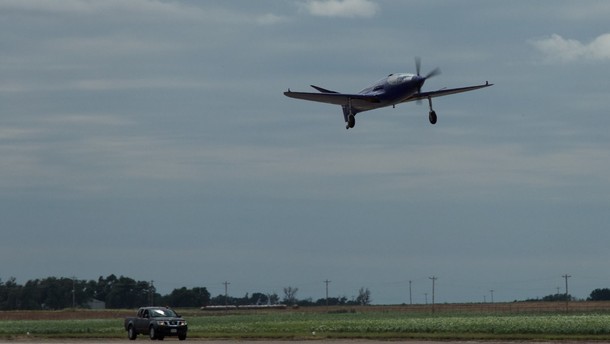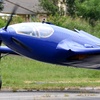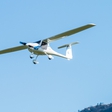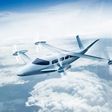

A group of aviation enthusiasts from Tulsa in Oklahoma succeeded in achieving something Ettore Bugatti was prevented from doing by the World War 2. His Bugatti 100P finally took off the ground for the first time in history, but as a faithful replica, named Reve Bleu (The Blue Dream) by its the creators.
In 1937, Ettore Bugatti was developing a modern plane for the French government, designed initially to set a world speed record and to compete in the prestigious Coupe Deutsch air race. The plane was supposed to later take on the role of a military plane, since it also met the required criteria for a light-weight fighter.
Bugatti collaborated with Belgian constructor Louis de Monge as the chief engineer and the men created a technological marvel, an elegant, extremely advanced aircraft with forward-swept wings, a "Y" shaped empennage and a pair of counter-rotating 2-bladed Ratier propellers. The inline engine design was revolutionary – the aircraft's pair of 4.9 liter, 450HP, 8-cylinder racecar Bugatti Type 50 engines were actually positioned behind the cockpit.
The plane was very light, constructed mostly of wood, with layers of balsa and hardwoods. Unfortunately, German invasion of France in 1940 put the project on hold and the plane never flew. Prototype was kept hidden in a remote barn for over three decades; after that it changed a couple of private owners and finally found its permanent home in the EAA (the Experimental Aircraft Association) AirVenture Museum based in Oshkosh, Wisconsin.
The Reve Bleu replica aircraft remains highly faithful to the size, power, and shape of the original Bugatti 100P, despite the fact that it also incorporates fiberglass construction and machined alloy fittings as well as other constructing elements that were not available in the 1930s.
Since Bugatti 100P never flew, the puzzling question lingered through the decades: would the plane fly? The answer was given on 19 August 2015. The famed plane indeed could have flown, judging from the fact that the Reve Bleu replica successfully left the ground and made a short flight, reaching heights of 30.5 meters and maximum speed of 204 kilometers per hour. The landing proved to be a little bit awkward, though. Aircraft's right-hand brake gave out and Buggati 100P veered off the runway. Both propellers were damaged. Nevertheless, the Bugatti 100p Project team undoubtedly proved that Ettore Bugatti and Louis de Moge were on the right path.




